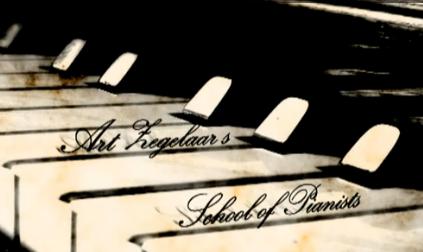The Art of Pedalling
In teaching the techniques of pedalling are often getting not enough attention. And yet for a fully expressive performance the way the sustaining pedal is used can do so much to enhance the performance.
The sustaining pedal does so much more than just delaying the damper to stop the sound of the strings. It puts every expressive intention of the music to the forefront and the attention of the audience, which by the way includes the performer, because you are always the listener of your own performance.
You please yourselves...
A piano has two or three pedals. The pedal on the right side is the sustaining pedal, the left one is the 'una corda' pedal and the middle one is either a study pedal or a more advanced type of sustaining pedal.
The 'una corda' pedal - if you have a higher range of piano, shifts the keyboard a centimeter or so to the right and instead of three strings you will only strike one string, which gives a softer sound.
I use it rarely, because I like to achieve the dynamics with my hands, but the 'una corda' string does change the character of the sound - often drastically - which by the way is the real reason I don't want to use it for dynamics reasons solely.
But sometimes that is exactly what I want. For instance in music by Prokoviev, it often is very effective to change the character of the sound for a few bars and then I will use that pedal.
The sustained pedal on the right side is what we are dealing with today. You place your foot in the same direction as the pedal with your heel on the floor. Do put a shoe on, if you are not wearing any, and place your foot in such a way that the toes of are above the end of the pedal.
This way the angle your foot uses to press and release the pedal is the smallest. Take good care, when you release the pedal, to not take your foot off the pedal, because in that case you will generate all sorts of side noises, which you don't want.
All pedal marks in published music are only the basics and in fact you want and have to do a lot more with the sustained pedal to use it to create the effect you desire.
The basic way is to pedal each chord span - often a whole or halve a bar - by pressing the pedal immediately after striking the first note and upon the first note of the next chord span quickly releasing and pressing the pedal again. Take care not to release any keys, before the pedal is down again. The difficulty the student has to master is the fact that when the key stroke goes done the foot goes up, hence hand and foot go in the opposite direction.
To create a 'portato' effect hand and foot actually go in the same direction albeit sometimes the foot stays on the pedal a bit longer as the hands do, which play staccato.
A good example to practise these two types of pedalling is 'Reverie' by Claude Debussy. In the second halve of the the piece exactly this 'portato' effect is called for. But further this music by Debussy is still in his early 'classical-romantic' period, which doesn't call for the advanced techniques of pedalling you can use in his later piano music.
Now we are talking Debussy anyway: There is an exiting prelude 'la cathedrale engloutie', where the performer can just put the pedal down and extend it until the end of a section. Normally such behaviour is strictly a 'nono', but here it can be done to great effect....
Chopin is an example of Music, where the sustained pedal is usually provided for in the published music. But mostly it is very basic and the performer should do really a lot more to be able to communicate Chopin's music well. His waltzes are an excellent vehicle to get the student going here.
A different way of pedalling different sections in a Waltz, will create a contrast between the sections and underline the musical intention of that section.
For instance Waltz number 4 in F minor has four different blocks of music. The opening is vibrant and uplifting. Really, the performer does not feel bars of three beats, but groups of four bars. The pedalling in this first block is basic, clearing the pedal on the first beat and sustaining until the next first beat.
The second block though requires a lot more thought regarding pedalling: The pedal is released on the third beat every other bar, providing for a third beat without sustained notes.
In the third section with the grace notes and staccato chords it is best to not use any pedal at all.
Very often you will see that Chopin uses, as in his Mazurkas and Polonaises, a quaver (eighth note) with a semiquaver (16th note) rest and a semiquaver note. It would be a lost opportunity to underline Chopin's intention here, but just having the whole lot under one pedal. Rests are music and want to be played and the way you pedal things here is part of the performance of this music...
to be continued.....





